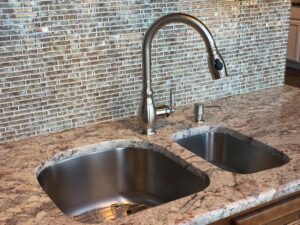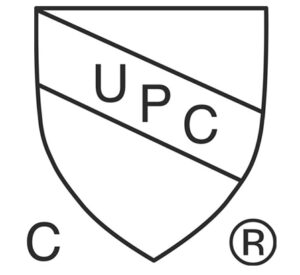-
You need to select your sink carefully because all sinks are different, and if the sink fails, it can only be replaced with a sink from the same manufacturer. You don’t want to replace a bad sink with another bad sink.

-
Make sure you get certified 304 stainless steel, so the sink matches kitchen appliances and the finish lasts longer. Today, many sinks are made of lesser steel, such as 301 or completely unknown 301 stainless has less chromium, so it is not lustrous and has less nickel, so the finish will not last as long. Uncertified sinks can be anything.
-
Sinks with machine finish are more consistent. Hand-finished sinks will have an inconsistent finish, particularly on the top rail.
-

Sound reducing pads are often sold as a benefit but almost always, the more sound pads, the cheaper sink because they make up for thinner or inferior quality steel. A pad on the bottom is all that is required on a quality sink made with quality steel. Most sound pads are made from recycled tires and can have an unpleasant odor in the enclosed space under the sink.
-
The best sinks are individually drawn (pressed) and then welded together. This makes method produces a heavier and quieter sink with less stress and stretch marks.
-
Building codes require sinks to be certified by an independent agency (usually UPC) to meet ASTM 112.19.3. The sink needs to have the manufacturer’s name or logo and the stamp from the certifying agency to be certified. If both are not present, then the sink does not meet the code. Many manufacturers self-certify or just stamp the sink as certified without the actual certification.
-
Who is responsible for the warranty. If the sink does not have the manufacturer’s name or logo, who will handle the warranty? Make sure sink experts are standing behind the sink, not just importers who buy, sell, and then walk away.